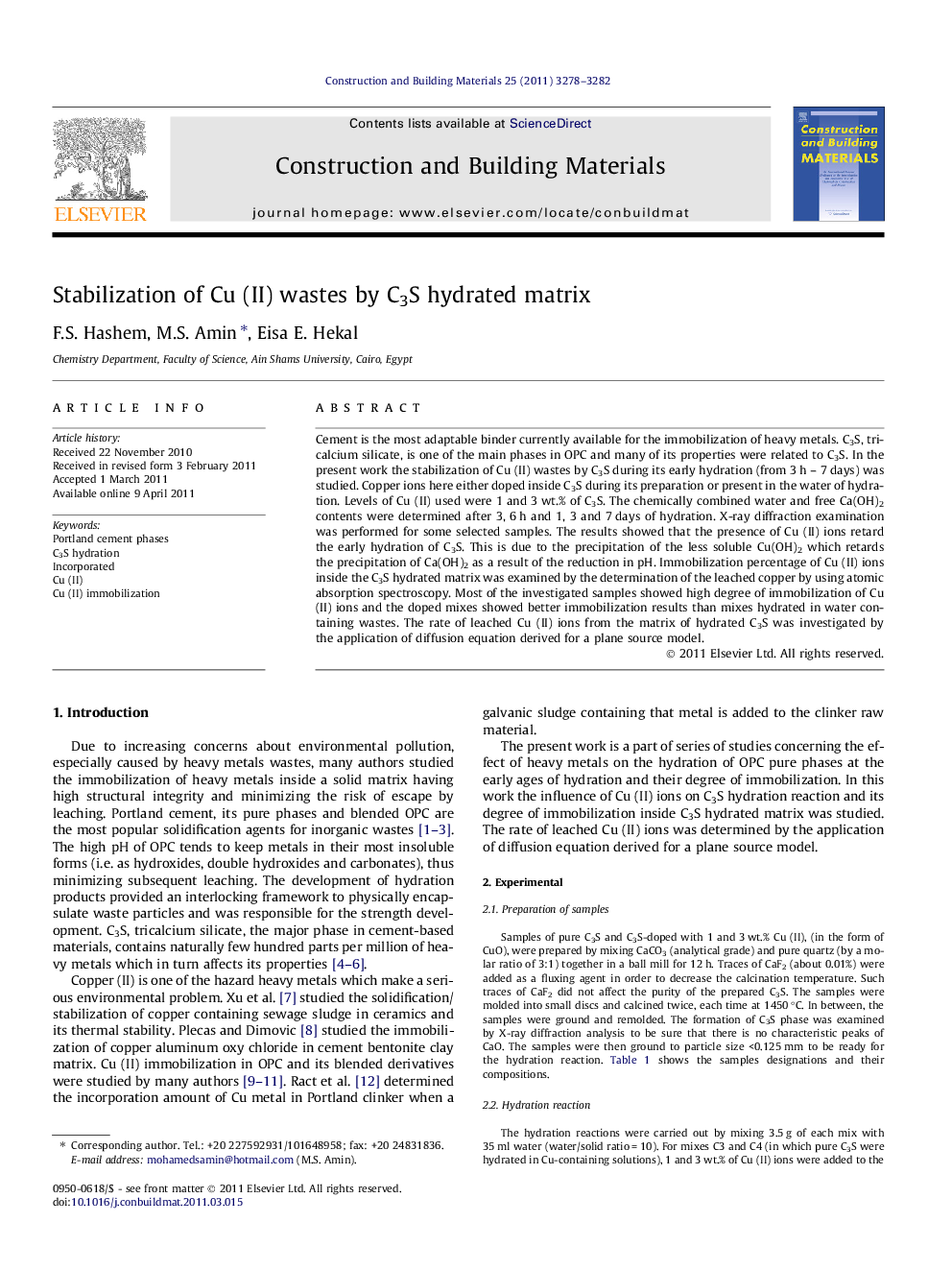| کد مقاله | کد نشریه | سال انتشار | مقاله انگلیسی | نسخه تمام متن |
|---|---|---|---|---|
| 259806 | 503644 | 2011 | 5 صفحه PDF | دانلود رایگان |

Cement is the most adaptable binder currently available for the immobilization of heavy metals. C3S, tricalcium silicate, is one of the main phases in OPC and many of its properties were related to C3S. In the present work the stabilization of Cu (II) wastes by C3S during its early hydration (from 3 h – 7 days) was studied. Copper ions here either doped inside C3S during its preparation or present in the water of hydration. Levels of Cu (II) used were 1 and 3 wt.% of C3S. The chemically combined water and free Ca(OH)2 contents were determined after 3, 6 h and 1, 3 and 7 days of hydration. X-ray diffraction examination was performed for some selected samples. The results showed that the presence of Cu (II) ions retard the early hydration of C3S. This is due to the precipitation of the less soluble Cu(OH)2 which retards the precipitation of Ca(OH)2 as a result of the reduction in pH. Immobilization percentage of Cu (II) ions inside the C3S hydrated matrix was examined by the determination of the leached copper by using atomic absorption spectroscopy. Most of the investigated samples showed high degree of immobilization of Cu (II) ions and the doped mixes showed better immobilization results than mixes hydrated in water containing wastes. The rate of leached Cu (II) ions from the matrix of hydrated C3S was investigated by the application of diffusion equation derived for a plane source model.
► Cu (II) ions removed through its stabilization within the hydrated matrix of C3S.
► The presence of Cu (II) ions causes retardation to the C3S hydration.
► All the investigated C3S mixes show a very high degree of immobilization of Cu (II) ion.
► The doped mixes showed better immobilization results than mixes hydrated in water containing wastes.
► Linear plan model equation was used to study the rate of leaching of Cu (II) ions.
Journal: Construction and Building Materials - Volume 25, Issue 8, August 2011, Pages 3278–3282